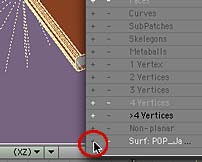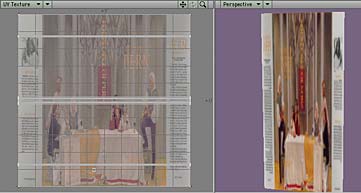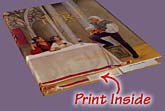
If you would like to follow along, you will need to download POPBook.sit or POPBook.zip for the model, and POPImages.sit or POPImages.zip for the various maps.
Once you have downloaded them, load the model into Modeler, and set one of the viewports to UV Texture, as before.
As you may have guessed from the fact that there are two color images, we are going to use two different maps to texture this book. First, we are going to create the map for the book jacket. So load the POPJacket.jpg as the image, and we'll get started.















![Click on an inside Poly and type ] to select them all.](../UVMapImages/UVTut3/LWUV3-17.jpg)

